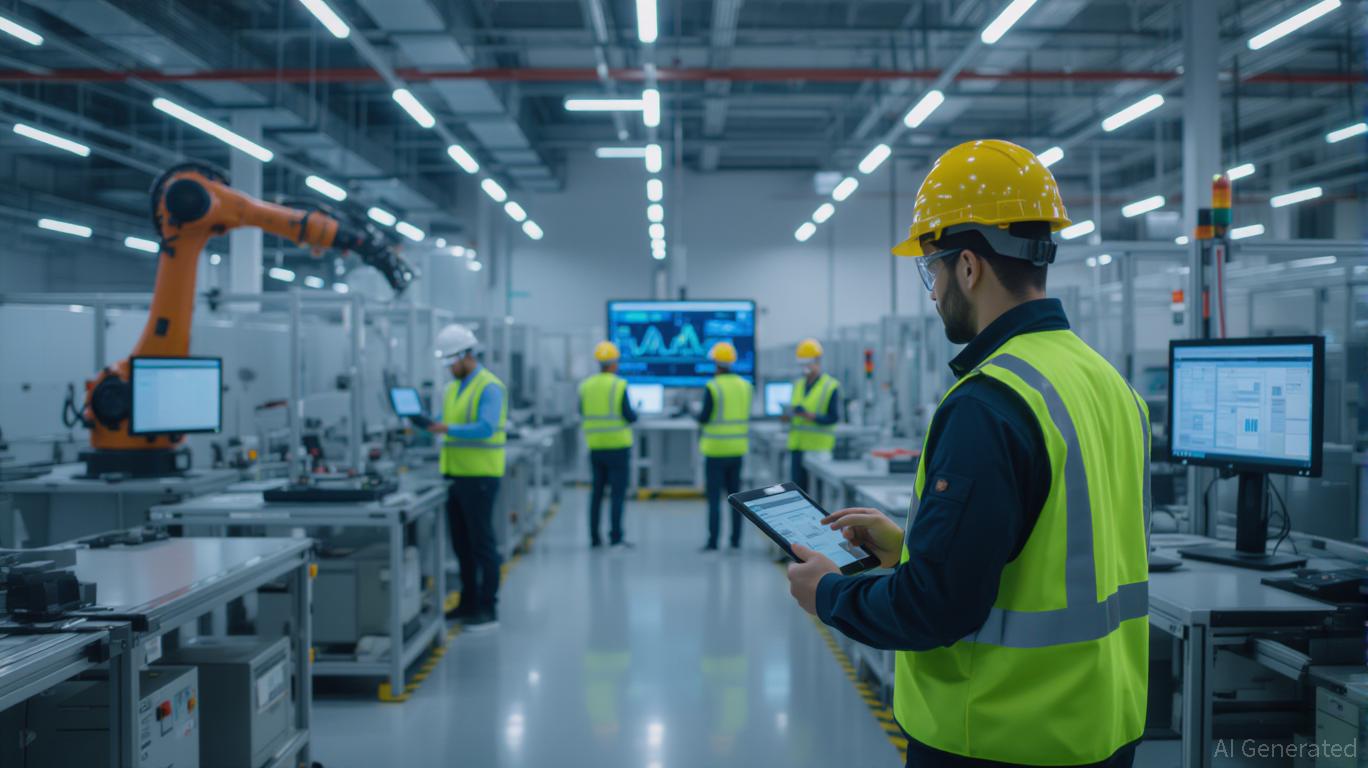Artificial intelligence is rewriting the rules of corporate profitability in labor-intensive industries. From manufacturing to logistics and customer service, AI-driven workforce optimization is not merely automating tasks—it is redefining the economics of production, distribution, and engagement. As 2025 unfolds, the financial performance of early adopters reveals a stark divide: companies that have strategically embedded AI into their operations are outpacing peers in margins, scalability, and resilience. Yet, this transformation comes with risks—job displacement, ethical dilemmas, and the volatility of unproven technologies. For investors, the challenge lies in balancing the promise of AI with its long-term uncertainties.
AI in Logistics: Efficiency Gains and Cost-Cutting
Logistics, the lifeblood of global trade, has become a proving ground for AI’s potential. Amazon’s warehouse automation, powered by machine learning and robotics, has cut order fulfillment times by 40%, while UPS’s AI-driven route optimization has slashed fuel costs by millions annually. These gains are not just operational—they translate directly into EBITDA expansion. According to McKinsey, 27% of logistics firms now attribute 5% or more of their EBIT to AI, a jump from 22% in 2021.
The financial metrics tell a compelling story. For every $1 invested in AI logistics tools, companies report a 3–5x return within 18 months, driven by reduced labor costs and faster throughput. However, the human cost is undeniable. Customer service roles, which account for 100% AI exposure in some sectors, face near-total displacement. The ripple effect? A labor surplus that could depress wages and strain social safety nets, creating political and reputational risks for companies.
Manufacturing: From Predictive Maintenance to Product Innovation
In manufacturing, AI’s value extends beyond automation. Google’s use of AI to reduce data center cooling energy by 40% exemplifies the sector’s shift toward predictive optimization. Similarly, predictive maintenance systems now cut downtime by 25%, a critical edge in industries where production halts cost millions.

Financially, the results are striking. Companies like Siemens and General Electric have reported double-digit margin improvements from AI-driven quality control and supply chain analytics. For investors, the key is to distinguish between companies that treat AI as a cost-reduction tool and those leveraging it for innovation. The latter, such as Tesla’s AI-optimized battery production, are building moats through proprietary processes.
Customer Service: The Double-Edged Sword of AI
Customer service, once a human-centric domain, is now dominated by AI. Alibaba’s AI chatbot handled 95% of customer inquiries during its 2024 Singles’ Day event, slashing labor costs by 60%. Yet, the trade-off is quality. AI-generated responses, while efficient, often lack the nuance to resolve complex issues, risking customer dissatisfaction.
The financial performance of early adopters is mixed. JPMorgan’s AI-driven document processing reduced compliance costs by $100 million annually, but Amazon’s scrapped AI résumé screener, which exhibited gender bias, cost the company millions in retraining and reputational damage. This duality underscores the need for rigorous governance.
Strategic Value: The ROI of AI Maturity
The most successful AI adopters share a common trait: strategic alignment. Companies like Netflix and Microsoft have institutionalized AI into their OKRs, measuring ROI not just in cost savings but in customer retention and innovation velocity. For instance, Netflix’s AI-driven recommendation engine now accounts for 80% of user engagement, directly boosting subscriber growth.
The lesson for investors is clear: AI maturity correlates with financial outperformance. Firms that integrate AI across functions—sales, supply chain, R&D—see compounding returns. Conversely, “pilot purgatory” companies, which treat AI as a niche experiment, underperform.
Long-Term Risks: Workforce Displacement and Ethical Challenges
Despite the financial allure, AI adoption in labor-intensive industries carries systemic risks. In logistics and manufacturing, job displacement is accelerating. A 2024 survey found that 74% of customer service workers believe AI will replace 30% of their tasks within a year. While reskilling programs are emerging, the transition is uneven.
Regulatory risks are also mounting. The EU’s AI Act and U.S. state-level laws on algorithmic transparency are forcing companies to invest in compliance. For example, Amazon’s $300 million investment in ethical AI frameworks in 2025 reflects this trend. Investors must weigh these costs against potential gains.
Investment Implications: Navigating the AI Landscape
For investors, the path forward lies in identifying companies that balance AI’s strategic value with risk mitigation. Key criteria include:
1. Data Infrastructure: Firms with robust data governance, like UPS and Siemens, are better positioned to scale AI.
2. Ethical AI Frameworks: Companies investing in transparency and bias mitigation, such as Google and Microsoft, reduce long-term liabilities.
3. Sector Diversification: Overexposure to AI-heavy industries like logistics risks volatility; pairing with AI-resistant sectors (e.g., healthcare) offers balance.
Conclusion: The AI-Driven Future
AI-driven workforce optimization is reshaping corporate profitability, but its success hinges on strategic execution. For investors, the opportunity is vast—yet so are the risks. The next decade will separate the AI leaders from the laggards. Those who act now, with a clear-eyed view of both the rewards and the pitfalls, will reap the greatest returns.
As the world grapples with the human and economic costs of automation, one truth remains: AI is not just a tool for efficiency—it is a force of transformation. The question for investors is not whether to embrace it, but how to do so responsibly.
“””

